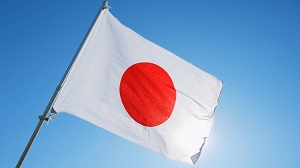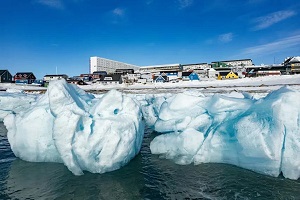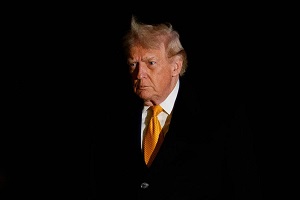The Trans-Pacific Partnership (TPP) — a mega trade deal covering 12 countries that together account for more than one-third of global GDP and a quarter of world exports — is the latest battleground in the decades-long confrontation between proponents and opponents of trade agreements.
As usual, the pact’s advocates have marshalled quantitative models that make the agreement look like a no-brainer.
Their favourite model predicts increases in real incomes after 15 years that range from 0.5 per cent for the United States to 8 per cent in Vietnam.
Moreover, this model — developed by Peter Petri and Michael Plummer, from Brandeis and Johns Hopkins Universities, respectively, building on a long line of similar frameworks by them and others — foresees relatively insignificant cost to employment in affected industries.
The TPP’s opponents have latched on to a competing model, which generates very different projections. Produced by Jeronim Capaldo of Tufts University and Alex Izurieta of the United Nations Conference on Trade and Development (along with Jomo Kwame Sundaram, a former UN assistant secretary-general), this model predicts lower wages and higher unemployment all around, as well as income declines in two key countries, the US and Japan.
There is no disagreement between the models on the trade effects. In fact, Capaldo and his collaborators take as their starting point the trade predictions from an earlier version of the Petri-Plummer study.
The differences arise largely from contrasting assumptions about how economies respond to changes in trade volumes sparked by liberalisation.
Petri and Plummer assume that labour markets are sufficiently flexible that job losses in adversely affected parts of the economy are necessarily offset by job gains elsewhere.
Unemployment is ruled out from the start — a built-in outcome of the model that TPP proponents often fudge.
The Peterson Institute for International Economics, which published the pro-TPP study, inexplicably states in its brief: “The agreement will raise US wages but is not projected to change US employment levels…”
The result on wages is a conclusion of the study, whereas the employment “projection” could have been made before the computer crunched a single number.
Capaldo and his collaborators offer a starkly different outlook: a competitive race to the bottom in labour markets, with a decline in wages and government spending keeping a lid on aggregate demand and employment.
Unfortunately, however, their paper does a poor job of explaining how their model works and the particulars of their simulation are somewhat murky.
The Petri-Plummer model is squarely rooted in decades of academic trade modelling, which makes a sharp distinction between microeconomic effects (shaping resource allocation across sectors) and macroeconomic effects (related to overall levels of demand and employment).
In this tradition, trade liberalisation is a microeconomic “shock” that affects the composition of employment, but not its overall level.
Economists tend to analyse trade agreements in such terms, rendering the Petri-Plummer model more congenial to them.
By contrast, the Capaldo framework lacks sectoral and country detail; its behavioural assumptions remain opaque; and its extreme Keynesian assumptions sit uneasily with its medium-term perspective.
The trouble is that the real world has not lined up so neatly with trade economists’ assumptions.
Critics of trade agreements have marshalled countless anecdotes about the adverse effects of imports on wages and employment in affected communities. Recent empirical work by three academic economists — David Autor (MIT), David Dorn (University of Zurich), and Gordon Hanson (UC-San Diego) — shows that the critics have a point (and then some).
Autor, Dorn, and Hanson document that the expansion of Chinese exports has produced “substantial adjustment costs and distributional consequences” in the US.
In regions with industries hit hard by competition from Chinese imports, wages have remained depressed and unemployment levels elevated for more than a decade.
Falling employment in such industries was expected; the surprise was the absence of offsetting employment gains in other industries.
Advocates of trade agreements have long maintained that deindustrialisation and the loss of low-skill jobs in advanced economies have little to do with international trade; they are the product of new technologies.
In the current TPP debate, many prominent proponents still cling to this line. In light of the new empirical findings, such nonchalance toward trade has become untenable. (The Petri-Plummer model does indicate that the TPP will accelerate the movement of jobs from manufacturing to services, a result that the pact’s advocates do not trumpet.)
Economists do not fully understand why expanded trade has produced the negative consequences for wages and employment that it has.
We do not yet have a good alternative framework to the kind that trade advocates use. But we should not act as if reality has not severely tarnished our cherished standard model.
It would be far better to consider the full range of possibilities highlighted by the models on offer, instead of putting all the weight on a single one.
The uncertainties do not end with macroeconomic interactions. The Petri-Plummer study predicts that the bulk of the economic benefits of the TPP will come from reductions in non-tariff barriers (such as regulatory barriers on imported services) and lower obstacles to foreign investment.
But the modelling of these effects is an order of magnitude more difficult than in the case of tariff reductions. The assumptions needed to do so are not standard and require many arbitrary short cuts.
The bottom line is that neither side’s models generate numbers reliable enough on which a case for or against the TPP can be made. Just about the only thing we can say with some certainty is that there will be winners and losers.
Perhaps the agreement will galvanise investment and knowledge flows across the Pacific, giving the world economy a much-needed boost.
Perhaps not. But those who believe that this trade agreement, like previous ones, will provide lopsided benefits have ample reason to be concerned.




